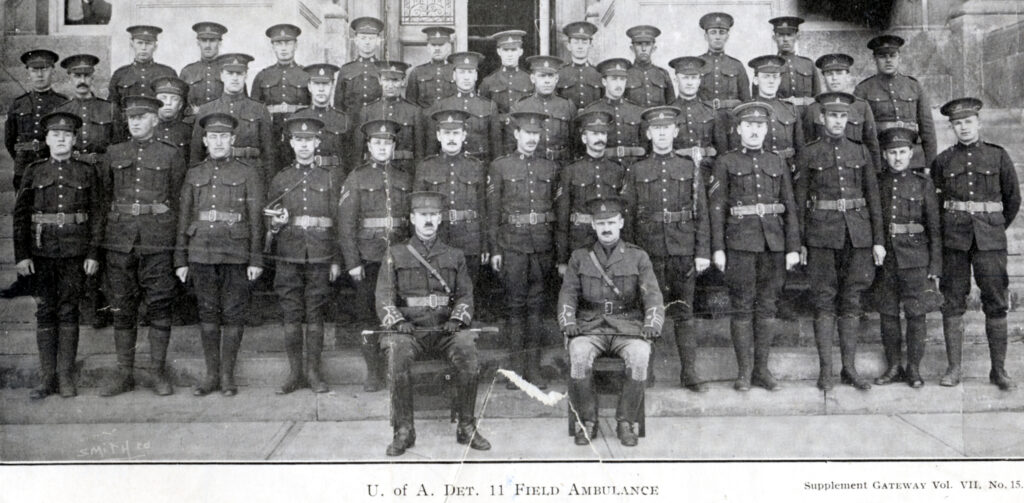When the First World War broke out on August 4, 1914, the University of Alberta had only 439 students and a small number of staff. By 1918, 484 staff and students had served in the armed forces, of whom 82 were killed. The first was Herbert Joseph Ball (d. May 1915), who was registered in the Faculty of Arts but was also a student at the Methodist Theological College, known as Alberta College South (later St. Stephen’s College).

In 1915, Heber Moshier, Professor of Physiology, in the new School of Medicine was one of the founders of the 11th Field Ambulance, beginning as a major and rising to the rank of Colonel and commanding officer. Fifteen medical students, six theological students from Alberta College South, and a young university employee went with him. They were joined by students from universities in British Columbia, Alberta, Saskatchewan and Manitoba. They embarked for France on March 1916, and fulfilled battle field roles including medical treatment, retrieval of wounded and dead soldiers, and the transport of supplies. Many were stationed in Tottenham Tunnel at the Battle of Vimy Ridge behind the 4th Canadian Division. Moshier was killed in action on August 29, 1918, and was buried in Villers Station Cemetery in France.
The largest number of students and some staff became part of the 196th battalion, known as the Western Universities Battalion. U of A President Henry Marshall Tory was instrumental in its founding together with the presidents of the three other western universities. There were not enough students, so conditions of enlistment were amended to allow enlisted men to come from other universities including colleges and schools as well as “professional and businessmen of education.”
By Adriana A. Davies, CA, Cav. D’Italia, PhD

